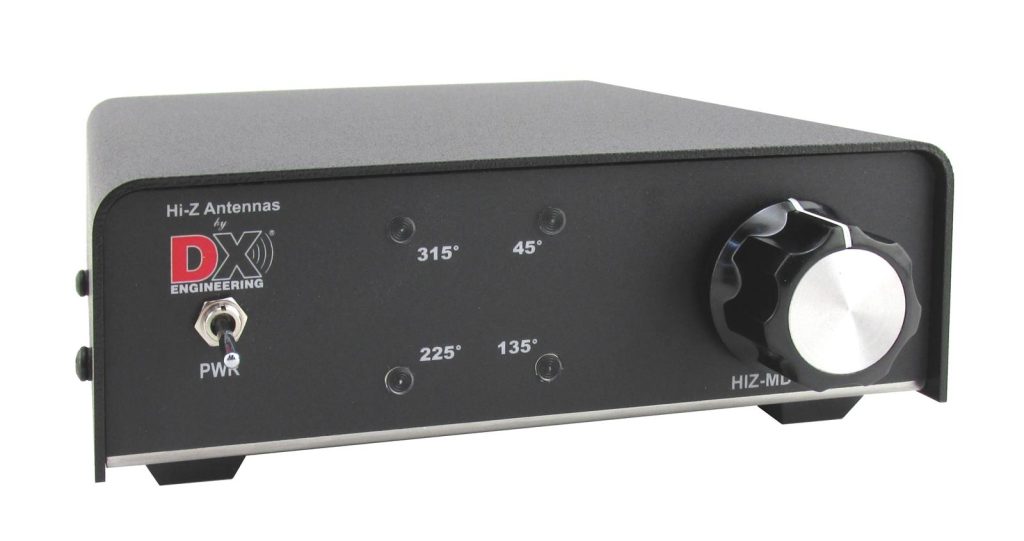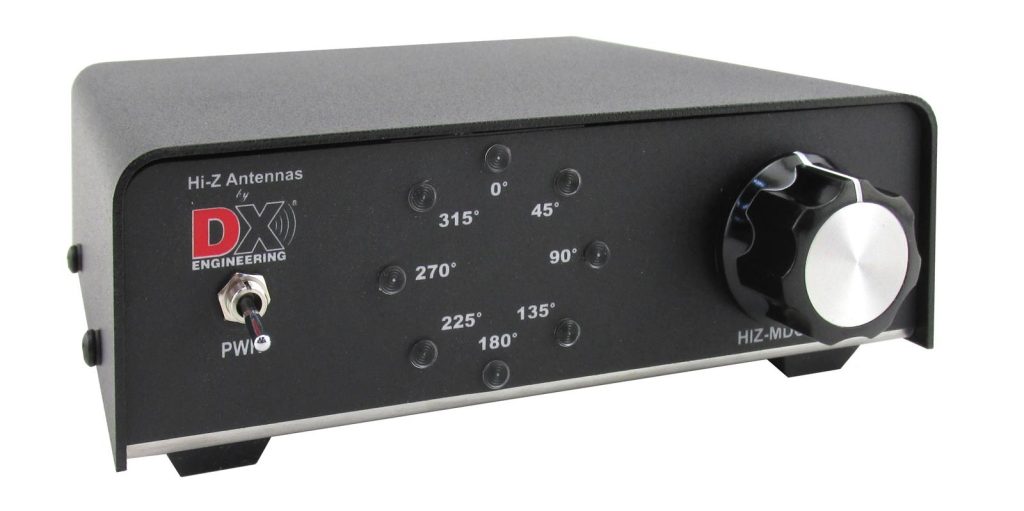When DX Engineering acquired Hi-Z Antennas’ lineup of HF receiving array products in 2022, the company’s research and development team went to work to make sure Hi-Z’s most popular devices would continue to be available to amateur operators worldwide.
The goal of this ongoing effort has been to roll out Hi-Z-inspired devices that retain the functionality of the original designs while making significant electronic and mechanical improvements. The evolution of these updated receive array devices includes efficient production, superior durability, and smoother operation.
DX Engineering is pleased to announce the release of Hi-Z Manual Directional Consoles—specialized BCD grounding switches that are specifically designed to operate Hi-Z Phasing Combiner relay units, also known as Phase Controllers.
Each HIZ-MDC console controls the phasing and direction selection of only Hi-Z Antennas Receive Vertical Antenna arrays and supplies power to the array element amplifiers. Consoles feature a large rotary switch knob and green LEDs arranged as receive array directional azimuth indicators with corresponding compass bearing degree markings on the front panel. The MDC-4 that controls the four-element Hi-Z Four Square Receive Array is below.

Selection of a specific model Manual Directional Control Console is required. Choose the model that corresponds to the desired version of Hi-Z Antennas Receive Array Phasing Combiner or legacy Phase Controller. Each console serves as a replacement for legacy, discontinued Hi-Z manual Shack Switches, and for the discontinued Hi-Z SS-2 and SS-2PLUS:
- HIZ-MDC-4 works only with the multiband Four Square Arrays PC-4A and PC-4ELEMENT.
- HIZ-MDC-6 works only with the multiband Three Element Six-Direction Triangular Arrays PC-3A and PC-3ELEMENT.
- HIZ-MDC-8PRO works only with the 85/113 ft. diameter multiband 8 Circle Arrays PC-8PRO and PC4-8PROUP/PLUS.
- HIZ-MDC-8 (below) works only with the 200 ft./100 ft. diameter monoband 8 Circle Arrays PC-8, PC-8A, and PC-8B.

Features include:
- Rugged construction
- Four large non-skid rubber feet
- Stainless steel chassis with cold-rolled steel black powdercoated lid
- Large, easy-grip rotary switch with end-of-rotation stops
- The required multi-conductor array power and BCD control cable (purchased separately for the required number of conductors and length to the array) passes through a grommet on the rear panel and is connected internally
- A rear panel 2.1mm +13.8VDC power connector accepts the included mating 2.1mm plug and unterminated DC power cable for connection to a user-provided +13.8VDC 1A fused, well-filtered power supply
An Important Note About Receive Antenna System Performance
The performance of a receive antenna system can be dramatically improved when the array elements are placed where RF noise is minimal. One of the most important aspects of the installation is to maximize the array’s distance from any structures, towers, transmitting antennas, metal buildings, large trees, and fences that induce RF noise or affect the antenna field.
Preserving the array directional pattern requires that we ignore the temptation to position the receiving antenna closer to the station, based on coaxial cable loss or control cable cost. RF loss is negligible on 160 and 80 meters with up to 1,000 feet of economical RG-6U feedline. Therefore, the control cable must be chosen for the conductor size necessary to deliver sufficient voltage at the current required by the phasing combiner and element amplifiers, despite the higher cost. The benefits of the investment in the appropriate control cable for a well-placed, far-away receive antenna array are the immeasurable profits of significantly improved reception.
A convenient chart in each model’s manual will help you choose a control cable conductor size based on the distance to the array and the resulting voltage drop with maximum current flow through the supply and ground return conductors.

